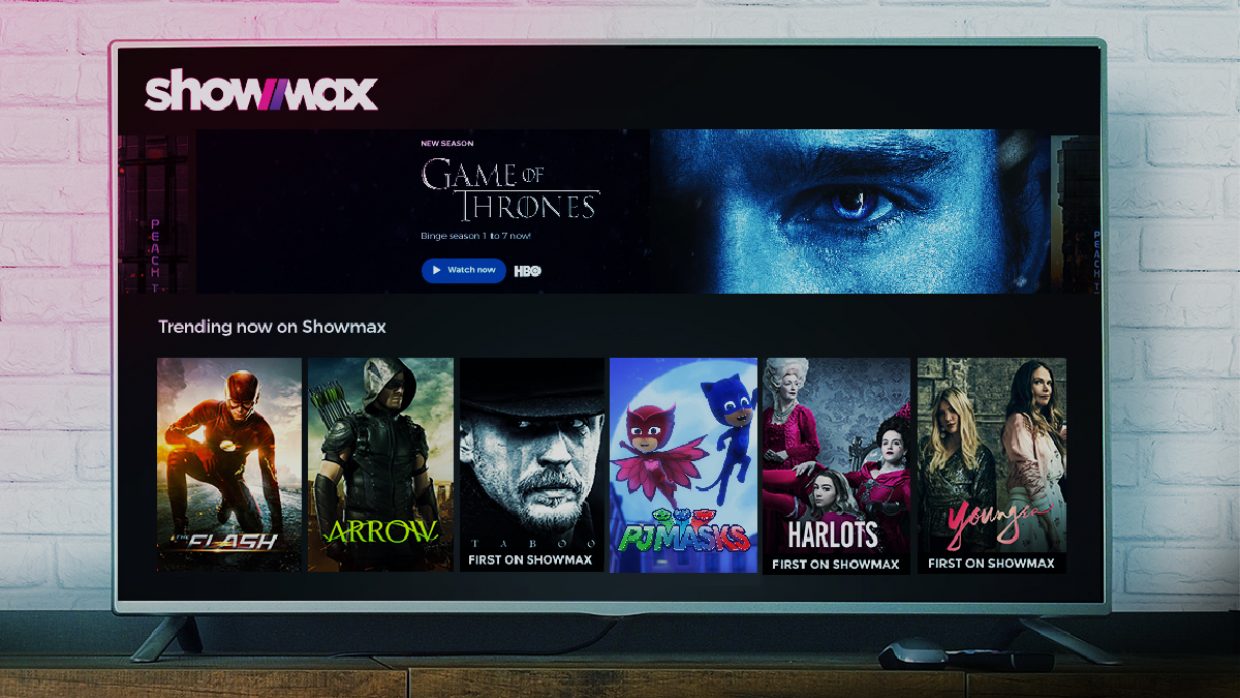
27 December 2017
How Showmax runs a growth team across 70+ global markets
Netflix took three years to launch in its second, closely adjacent market of Canada after first launching streaming to US subscribers in 2007. From 2010 till now, Netflix has been gradually expanding its international footprint, and is now technically available in almost every country in the world outside of North Korea, Syria, and a few others.
By contrast, since its service debut in 2015, Showmax, another subscription video-on-demand company, has expanded to 70+ countries or territories around the world, many — but not all — of them in Africa. For example, the company made headlines when it launched in Poland just 18 months after its initial rollout in South Africa. As in its other country markets, Showmax’s efforts in Poland focused on local hits and original content that it’s commissioning just for that market.
Showmax is an interesting business because it hasn’t followed your typical playbook of international expansion for growth. Instead, it’s looking for regional markets where people are already paying to consume their favorite local content, and betting that it can divert some of that spend towards a Showmax subscription.
It’s also just doing everything faster, and sooner. A lot of US companies enjoy a domestic market that’s big enough to tide them over for at least a few years before they start looking overseas, but Showmax has jumped straight into the deep end by moving into multiple, dissimilar country markets and producing original content that’s meant for local audiences (more Tali’s Wedding Diary, less Orange Is the New Black), in less than two years after its initial launch.
More interesting for the Reforge audience, the company’s doing all of this with a single, central growth team that serves markets as different as Poland and Kenya. Carving a growth team out of a more traditional org structure isn’t simple, and less so if your internal ‘customers’ are on different continents, with different payment processors, different economies, and distinct content.
So how has Showmax managed to build a unified growth team that sits in Europe, while rolling out its service offering in 70+ regions around the world?
We spoke with Barron Ernst, Showmax’s Chief Product Officer, about building an international growth team from scratch, and how the team balances local optimisations with global efforts to drive subscription growth:
- One specific way a centralised growth team can support dozens of country markets
- What it means to build “multilateral” growth
- How growth brings regional teams together
- The tactics of knowledge-sharing across multiple countries, teams, and goals
- The secret to adapting experiments and optimisations across 70+ markets
- How Showmax decides new country markets
- How brand marketing and growth play together
More details below!
1. With Showmax, each country market almost has its own product. How does your centralised growth team support so many geographies?
Go for shared wins first. Try things that positively impact across all of the markets, like optimising the funnel.
Specifically, a big focus for us is creating tools that empower regional and product teams to run their own growth. For example, we’ve built landing page optimisation tools to empower marketing. Our Polish team can now test 17 (or, however many) different landing pages at once, and can A/B test all of them through their performance marketing effort if they want to. That way, we don’t have to be involved from an engineering perspective every time.
Some other examples of “universal” optimisations include an AppBoy Integration for Push and Email that’s been a big win for us, as well as house-built analytics tools that decentralise data. We want to make it easy for any of our regional leads to test their own hypotheses and form conclusions with tools at their disposal.
The higher level principle is this — integrate or create a tool that enables the specific regions to have more control over the specific CRM strategy so that they can test and iterate on push, email, other notifications, landing pages, or whatever else, without impacting other regions in the world.
2. Are there tests or optimisation ideas that originate from a specific country market and populate to everyone else?
Yes, and we’re getting better at this all the time. If a specific country or region has a landing page that’s winning, we will try it in other regions as well. A good recent example was our South African team tried a signup experience that allowed for limited catalog browsing and found that it improved conversion about 30% (!!!). Therefore, we shared that learning with the Polish team and they were able to implement the page with a similar design for a similar results.
We do lots of cross learnings like that, also for things like email and push notifications.
We hope that growth is multilateral, and we think it should be. That means that the the central team is running tests, but also working with local teams running tests, and then connecting the tests working for one local team with what’s working for another team.
3. How do you exchange that knowledge across teams?
The local teams run separately but all lean on the same shared services, like our growth team. For instance, everyone leans on the same, shared growth product roadmap. If they need something, it gets prioritised onto that roadmap, which becomes a central place to check in. Having us in the middle helps make sure there’s at least some communication and sharing, but it also has to be reflected in the leadership priorities and style.
At Showmax, this happens outside of growth too, so it’s really a cultural emphasis as well. Bringing local teams and local insights together is something that’s reflected across the entire product roadmap. We have a sense of priority from each of the regions for their highest priority tasks for any specific team. Then, we have a prioritisation exercise where we look at what’s going to benefit the most regions, what’s going to be more specific to a particular region, which region is a priority at the moment, and we use that to make decisions about what we are going to work on.
4. How does knowledge sharing happen from a tactical perspective?
We do quarterly calls on the product roadmap, smaller weekly check-ins for more immediate updates, and weekly calls between all engineering and product teams, including growth, to discuss the bigger priorities and roadmap opportunities. So, plenty of communication. People come and pay attention to these check-ins because they want to know what’s going on with their own requests.
We also do some special things, like “hack weeks” that are specifically directed to solving things like improving our A/B testing tools based on feedback we get from the regional teams that are using them regularly.
Because of that, we’ve had had the local teams provide us with lots of feedback around things like mobile load speeds, page load speeds, and other user experience elements. For example, our South Africa added the word “cheque” to the credit card checkout page because many people in South Africa use a check card (as opposed to a credit card), and a lot of people were dropping out of the funnel because they didn’t think it would work for them. It turns out that that learning about credit card usage versus check card or other payment methods is valuable because we operate in a lot of regions where that’s the case. We end up learning a lot from the local teams, then work on those things centrally to improve performance and conversion across all regions.
That said, and even though we’re kind of in the center of all of this, growth shouldn’t be the bottleneck just so it can maintain relevance as an intermediary. In our case (and I’m sure for most companies), the product roadmap is already really long, so if you want something new, maybe see if you can achieve it with an existing tool.
To that end, we aim to train an impact-oriented mindset: “Why does this request matter, how many customers we think it can bring, what’s the value to the business?” That approach isn’t always obvious from the marketing side, especially with people who aren’t necessarily growth marketers but are more traditional marketers, but everyone is open to it.
5. Growth incorporates a lot of things like streaming, load times, what payments you can handle and what payment flow you follow, things that can be hyper-local. How do you adapt to those specificities, multiplied across the 70+ markets?
For payments, we rely a little bit on market intelligence from the markets where we’re already in operation in order to get a sense of what is our payment coverage within each market. But, we rely a lot on the local teams to say what matters. You may be the expert in growth, but the regional team is the expert in their area.
For reach, we rely on distribution partners in the local regions. In Poland, for example, we’ve done a large partnership with one of the largest mobile carriers, Play. That was driven because the local team knew that adding payment to a subscriber’s mobile bill was a key way that other services were spreading in the market, and that customers would be more interested in taking up a service with an offer like that. Therefore, that became a critical piece of the product roadmap that was a massive growth driver for the business.
6. How do you decide new country markets?
It’s not a growth team decision. We have a strategy team that performs market analysis and looks at entry potential, everything from existing VOD behavior to the content library.
Growth alone doesn’t drive new market decisions. In our case, growth is really focused on optimising and growing a market once it’s been decided, and then helping to achieve similar retention to other markets we have.
7. A lot of your country markets are ones where brand still plays a big role in acquisition. How does brand fit in with growth efforts?
When you’re in the position of building an entirely new category in a certain market, you have to do above-the-line (brand) marketing.
But long term, once you’ve made some headway, you want to switch that resource and spend allocation over to performance marketing, because it’s typically more efficient and much more measurable.
For example, when our research indicated that 50% of people had heard of Showmax, then we knew we had “saturated” the market in terms of awareness, and could effectively move into performance marketing from there.
When it comes to above-the-line marketing, the local teams are much more experienced than the central growth team. The regional teams do a great job of establishing a brand presence for Showmax in their local markets so that when they start to do more performance marketing, there’s already brand recognition. It also means that when we go after partnerships with telcos, customers find a lot of value in getting Showmax as part of their mobile data plan (it’s already a thing to them), and are more open to becoming users and even power users of the service.
When you achieve a high enough level of brand recognition (in our case, we benchmarked against competitors) where you are a well-known enough band in the video entertainment space, then those efforts don’t yield the same value. That’s when you double down on performance marketing and also start thinking about content. That’s been our order of operations.
Above-the-line is all about breaking ground before you can do acquisition. If platforms like Facebook have already aggregated users in an efficient way, then you don’t need ATL as much.
8. What else would you tell growth teams at other companies looking to expand to far-flung markets?
We are a multinational company that has a large base of people who consume African and Polish products that we offer, based on the fact that one of our basically, our brother/sister company is the largest provider of satellite TV in the content.
It’s a unique setup. We are a startup born out of a big company, and not necessarily every single company would do it the same way we do it. As always, you have to remember to apply the logic to your own situation, but this is the method that’s scaled well for us.
Special thanks to Barron Ernst for his contribution to this post, and an extra special shout-out to Andrew Owen, the Sr. Product Manager at Showmax who runs the growth team discussed in this interview.
Republished with permission from Reforge.com
Original African stories by local talent

Empini S1
Stream the Showmax Original drama series Empini from 23 May 2024.

Original Sin: My Son The Killer
Original Sin: My Son The Killer follows the murder of Andrea Venter by Gerhard Jansen van Vuuren, who then went on the run from South Africa to Brazil.
Tracking Thabo Bester
From the makers of Devilsdorp and the director of Convict Conman comes the true-crime documentary South Africa has been waiting for. Two episodes now streaming, and the remaining two episodes land on 22 March 2024 on Showmax.

The Illuminated
The Showmax Original docuseries The Illuminated explores different religious movements in South Africa. Stream now, with new episodes every Wednesday.

Koek S1
The crime comedy Koek, starring Cindy Swanepoel, now streaming on Showmax, with new episodes every Thursday.

Ekhaya Backpackers S1
Stream the Showmax Original comedy series Ekhaya Backpackers, with new episodes every Thursday.

Cheta M
Cheta M explores the love story between Adanna and Nnanna, young lovers who battle the spiritual and political forces in their way. Stream now, with new episodes Wednesday to Friday.

Youngins S1
Stream Tshedza Pictures’s first teen drama, Showmax Original Youngins, with three new episodes every week.
The Winning Ticket, a Showmax Original
Youngins S1 episodes 1-20 recap
More Mzansi gold

Youngins Season 1 episodes 31-33 recap: Revelations
Amo and Mahlatse become a couple, Tumelo ditches Sefako, and Khaya sees both Sefako and Principal Mthembu in a new light in episodes 31-33 of Showmax Original Youngins.

Interview: Knock knock, it’s Youngins’ Tshepo!
Tshepo Matlala talks about how he brings class clown Tshepo’s jokes to life, and what’s behind the mask, in Showmax Original Youngins.

Siyabonga Thwala stars in action-packed Empini
Showmax announces new action-drama series Empini, starring three-times SAFTA winner Siyabonga Thwala. Premieres 23 May on Showmax.

The Mommy Club S2 episode 9 recap: Mrs Mops’ launch event
In episode 9 of The Mommy Club, Mrs Mops launches her skincare range and Barbra and Mantshi make amends. New episodes every Monday.
